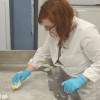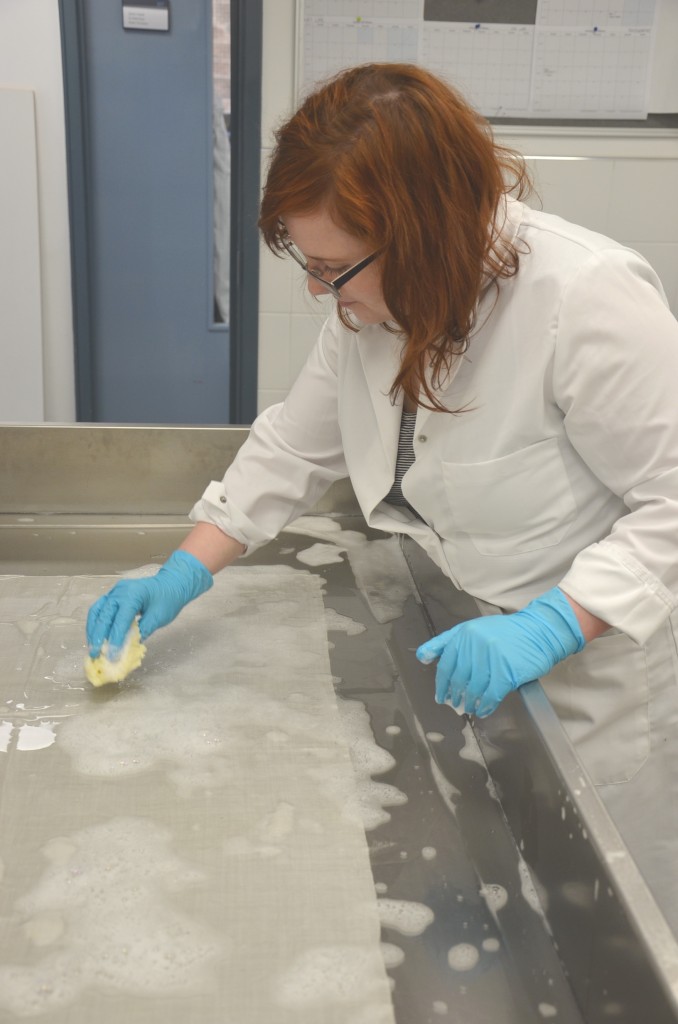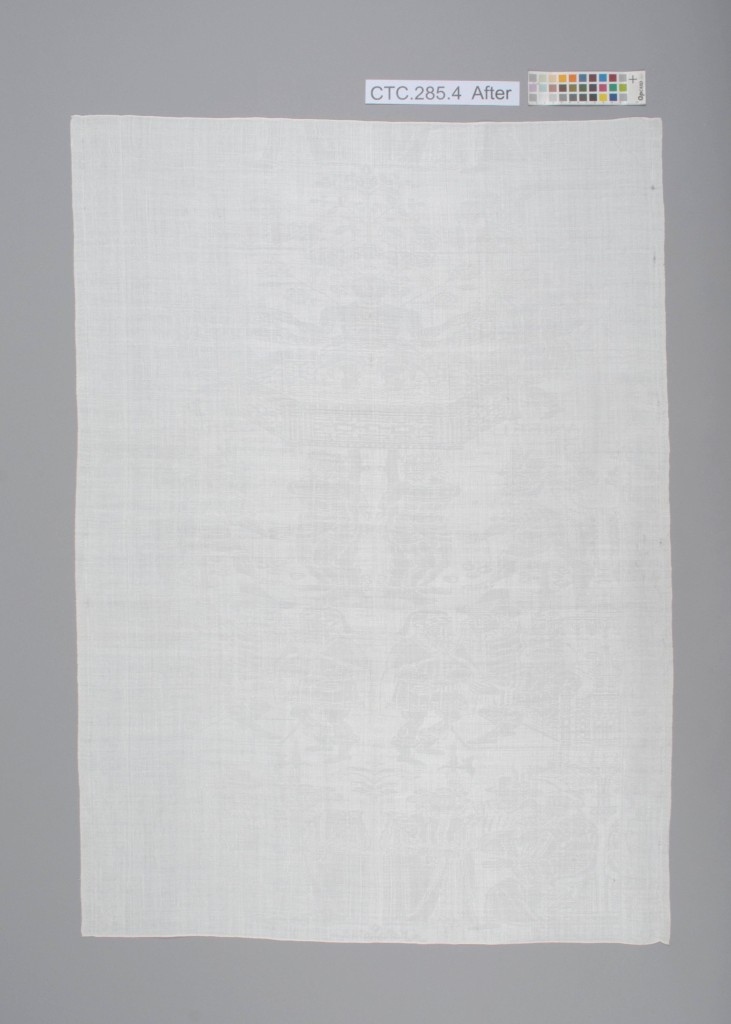
by Michelle Hunter, first year student, MPhil Textile Conservation.
Over the last few weeks we first years have been exploring the theory and practice of wet cleaning in textile conservation. Wet cleaning is cleaning with water (and sometimes other conservation additives such as detergents) and is used in textile conservation to remove soiling and residues from the textile fibres that cause deterioration. This treatment method also aids in relaxing creasing and can improve the aesthetic appearance of the textile. We have looked closely at the science theory, practical application, benefits, implications, and ethical considerations of this treatment type.
My first project, along with three of my colleagues, was to undertake the wet cleaning of a white, linen damask napkin with a repeat pattern depicting the biblical story of Susannah and the Elders; one of a set of ten belonging to The Mercers’ Company. The Mercers’ Company is the Premier Livery Company of the City of London with a rich history of over 700 years. The napkins are believed to have belonged to the estate of Sir Thomas Gresham (1518-1579). Gresham was a member of the Mercers’ Company, founder of the Royal Exchange, and one of the most famous English merchants of the sixteenth century. In an auction of 1923 they were sold by his decedent, Leveson Gower. The auction catalogue stated that they were used at the dinner attended by Queen Elizabeth I to celebrate the opening of the Royal Exchange on 23 January 1571. Subsequent research, based in part on a stylistic interpretation of the costumes depicted in the napkins, suggests they are more likely to have been woven after the death of Sir Thomas Gresham in 1579. Either way, they are fantastic examples of the finest damask and the impressive skills of weavers at the time and have a fascinating provenance and attribution. [1]
The project first looked at documenting the object, determining material construction, assessing condition, and taking photographs. Overall the objects were in excellent condition especially considering their age and function. Although structurally sound, they appeared to have become slightly yellow, which is believed to have been caused by the linen fibres degrading over time and had also been stored folded which had caused deep creasing throughout.

Careful consideration was given to the composition of the wash bath to ensure that the conservation grade detergent chosen was suitable for the type of fibre and soiling present. They were washed flat and sponged lightly with a natural sponge. A final rinse of deionized water ensured no impurities remained in the napkin. Wet cleaning successfully reduced the yellowing, removed any soluble degradation products in the fibres causing deterioration, and overall the object appears brighter. The creases were relaxed and the napkin resembles a napkin again.
This project was an excellent way to put wet cleaning theory into practice and I am grateful to The Mercer’s Company for allowing us to work on such amazing objects.
[1] David Mitchell, “Table Linens Associated with Queen Elizabeth’s Visit to Gresham’s Exchange,” in The Royal Exchange, ed. Anne Saunders, 50-56 (London: London Topographical Society, 1997).



